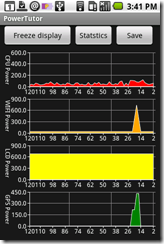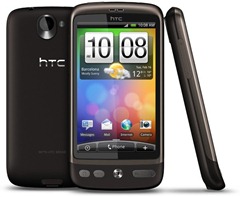
How often have you have thought of acquiring the power of monitoring your cellphone’s battery? Well, for most phones it would be just a dream, but thanks to openness of Android, it’s truly transparent.
The App is called PowerTutor, it does provide insight as to what’s using the most juice out of the battery – Is it the display, or CPU usage on an App, and even breakdown of power usage by apps.
No doubt, it’s far more superior than Android’s native power monitor, and in fact most advance app that ever landed on a Phone. The native Android monitor is limited to the percentage of battery use by component or application.
PowerTutor goes down into detail and draws a graph to represent the actual power consumption over time at the component, app level. This can be a great benchmark for choosing applications, when there are two identical apps in the Android Market :)
It’s likely to be a great app for App developers who can now analyze and Optimize battery usage while developing one so as to optimize it for the best battery life. And when the god work is done, they can compare and declare that their app is efficient and more competitive than others.
One more use I could see is in it’s Wi-Fi Power usage monitor. User will now know at which positions in the room, wifi signal drops by fractions and results in higher power usage.
If you own Motorola Droid, this app can help you monitor Battery usage while Droid is OverClocked to 1Ghz or above.
PowerTutor itself uses about 5-7% of a Nexus One’s CPU, so running it all the time is such a bad idea. But it’s definitely a great app to play around.









